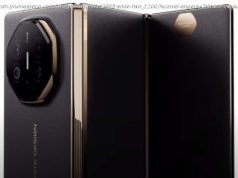Hands on: Buying a drone is no easy task, but the DJI Mavic Air is making that easier this year thanks to its compact design and smarts.
The DJI Mavic Air is the foldable drone that’s so compact yet so powerful that it’s ready slip out of your jacket pocket and record your next adventure in 4K video. You don’t have the chose one or the other in 2018.
That’s the futuristic-sounding idea behind this new consumer drone, which is more sophisticated than the DJI Spark and priced cheaper than the Mavic Pro.
The Mavic Air hovers that perfect middle ground offering, high-end specs and a lower-end price, even if this shiny new gadget remains an expensive investment.
It has just about every bell and whistle you could ever ask for, according to our initial tests, from 12MP photos to 32MP panoramic pictures to 21-hour battery life.
Importantly, the DJI Mavic Air is easy to fly thanks to improved object avoidance systems and gesture controls, giving this drone more mainstream appeal.
The DJI Mavic Pro price is $799 (£769, AU$1,299), which is more reasonable than the bigg-erin-all-ways Pro model. Paying this price gets you the drone, battery, a charger, new remote controller, a small carrying case, two pairs of propeller guards and four pairs of propellers.
Pre-orders are now available, and you can also invest in the Mavic Air Fly More Combo for $999 (£949, AU$1,599) starting today. It bundles the drone, three batteries, a remote controller, a travel bag, two pairs of propeller guards, six pairs of propellers, a battery to power bank adapter and battery charging hub.
The first orders will arrive to customers on January 28 and the overall price is reasonable, even if everyone was hoping it’d come in at $100 cheaper. But compare it to the DJI Mavic Pro price, which is $999 (£1,099 / AU$1,599), and it’s a savings for a more compact drone. The DJI Spark is now $399 – down from the $499 launch price (and £449 / AU$649) price tag.
The DJI Mavic Air is so pocketable that you could stick three in a jacket pocket and no one would notice. That’s what happened at today’s press conference.
Testing it out at the event, we found the drone’s arms to be easier to fold in compared to those on the DJI Mavic Pro and the entire drone felt solid sitting in the palm of our hand. Yes, it’s that small when folded up: 168 x 184 x 64 mm and weighs just 430g.
The DJI Mavic Air comes in three colors: white, black and red. We found the red version was a fingerprint magnet at the event and are currently testing out the white edition, which has a cleaner look to it.
The Mavic Air is the first DJI drone to introduce USB-C for content transfer. Sadly, we found out that it can’t be used to charge the drone. You’ll still have to lug around the proprietary DJI charger for this drone.
The DJI Mavic Air recording 4K video via its camera on a 3-axis gimbal. It’s going to be smoother than the 2-way gimbal found on the DJI Spark.
Even better, the 4K video has a bitrate of 100Mbps, giving you superior footage over the Full HD 1080p video from the Spark. Even better, it can do 120fps for slow motion action shots and capture 12MP normal stills.
We’ve yet to fly the DJI Mavic Air outdoors but will soon update this review when we do in New York City.
The DJI Mavic Air has 21-minute battery life, which also puts it smack dab in the middle of the Pro and Spark drones at 27 and 16 minutes respectively.
That’s enough time for a short take off, flight and landing for most people, and it’s actually exceptional that DJI was able to pack that much battery power into a tiny, foldable drone.
We still suggest carrying a spare battery (or two) if you’re serious about flying a drone. With preparation, you can’t get a full 21 minutes of flight time, when you really time things out.
We’ll test the DJI Mavic Air battery life outside of the press conference venue to see if the drone lives up to the longevity hype.
The DJI Mavic Air is the best possible evolution of the DJI Mavic Pro, taking cues from the Spark like gesture controls and a smaller size and mixing it with Pro features.
The result is a drone that’s a nice compromise for a lot of people who don’t need ‘Pro’ from a drone. They need over 20 minutes of flight time, advanced obstacles avoidance sensors and a 4K camera, all of which the Mavic Air delivers.
With the money you save on buying this more compact, foldable drone, you could buy an extra battery or two and solve that problem, if you’re tempted by the Pro. We’ll continue to test this drone in the coming week and update this page to a full review.






